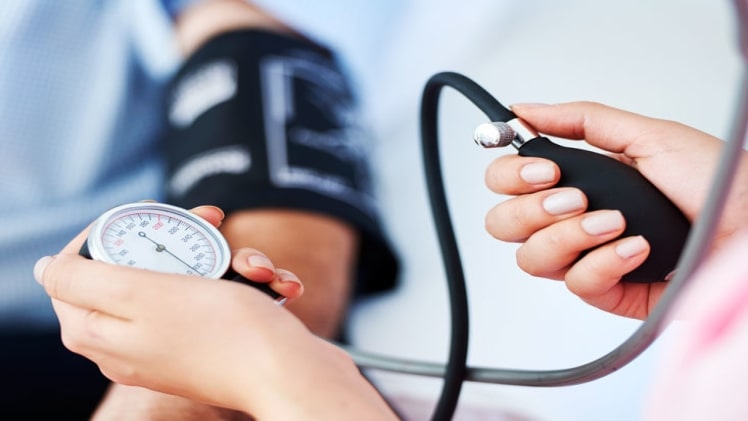Malignant hypertension is a term reserved by professionals like Cardiologist in Lahore for extremely high blood pressure that can risk organ damage. Malignant hypertension is a medical emergency, requiring immediate treatment. Read on to know more about malignant hypertension:
What is malignant hypertension?
In comparison to gradual rise in blood pressure, the sudden rise in blood pressure is much more dangerous. For disease free individuals, the normal range of blood pressure is less than 120 mmHg systolic and 80 mmHg diastolic. With malignant hypertension, the blood pressure rises above 180/120 mmHg, which is extremely dangerous. As mentioned before, this sudden rise in blood pressure can lead to organ damage, hemorrhages and even death.
Malignant hypertension is common in individuals who suffer from high blood-pressure; however, it can also occur in normal individuals, and those suffering from kidney injury and endocrine disorders.
While hypertension is a common medical illness, malignant hypertension is a rare condition, occurring in only 1 percent of people. The risk of malignant hypertension is higher in men, and people from lower socio-economic background.
What are the causes of malignant hypertension?
Malignant hypertension is a consequence of uncontrolled high blood pressure. Additional causes include:
- Renal artery disease that cause renin release from the kidneys
- Adrenal disorder like Conn’s syndrome, pheochromocytoma, renin-secreting tumor and Cushing syndrome
- Use of certain drugs
- Thyroid disorders
- Structural heart disease
- Withdrawal and sudden stoppage of certain medication
- Hormone Replacement Therapy
What are the different types of malignant hypertension?
The different types of malignant hypertension include:
- Hypertensive emergency: this is the rise in blood pressure, which is a medical emergency requiring immediate care. With this type of rise in blood pressure, there is visible organ damage. Hypertensive emergency needs hospitalization and intravenous medication to bring down the blood pressure down. The patient is discharged once the blood pressure is in the safe range, on oral medication.
- Hypertensive urgency: in contrast, this is the type of high blood pressure without visible signs of organ damage. This type of high blood pressure does not require hospitalization and can be managed with oral medication alone.
What are the symptoms of malignant hypertension?
The general symptoms of malignant hypertension include:
- Blurred vision
- Severe headache
- Numbness in the limbs
- Difficulty in breathing or shortness of breath
- Chest pain
The organ specific symptoms of malignant hypertension include:
- Blindness
- Coma
- Confusion and drowsiness
- Continuous headache
- Seizures
- Nausea and vomiting
- Bleeding in the retinal blood vessels
- Acute kidney failure
How to diagnose malignant hypertension?
The diagnosis of malignant hypertension is based on the clinical examination and history of the patient. The investigations for malignant hypertension include:
- Checking the blood pressure periodically
- Lung auscultation to check for pulmonary edema
- Examining the eye for signs of retinal damage
- Blood tests like:
- Blood clotting profile
- Serum sodium and potassium levels
- Complete blood count
- Blood sugar levels
- Kidney tests like
- Urinalysis for presence of blood and albumin
- Ultrasound of the abdomen to evaluate the kidneys
- Renal vessel angiogram
- Tests for heart health like:
- Heart auscultation for abnormal heart sounds
- Echocardiogram to check heart function
- ECG to check electrical activity of heart
- Chest x-ray to look at the size and shape of heart
What are the complications of malignant hypertension?
The complications of malignant hypertension include:
- Aortic dissection
- Pulmonary edema
- Stroke
- Seizures
- Heart failure
- Heart arrhythmias
- Heart attack
- Permanent blindness
- Acute kidney failure
- Coma
How to treat malignant hypertension?
This medical emergency needs hospital treatment, with the goal to reduce blood pressure steadily and carefully. The steps of management include:
- Admitting the patient to intensive care with continuous cardiac monitoring
- The patient undergoes frequent assessment of neurologic status, urine output and fluid intake
- Administration of intravenous antihypertensive medication, like:
- Nitroprusside
- For patients with renal insufficiency there is Fenoldopam
- Labetalol
- Calcium Channel Blockers like Nicardipine, verapamil, diltiazem
- Beta blockers like esmolol and metoprolol
- Hydralazine for pregnant patients under supervision of a Cardiologist in Rawalpindi.

